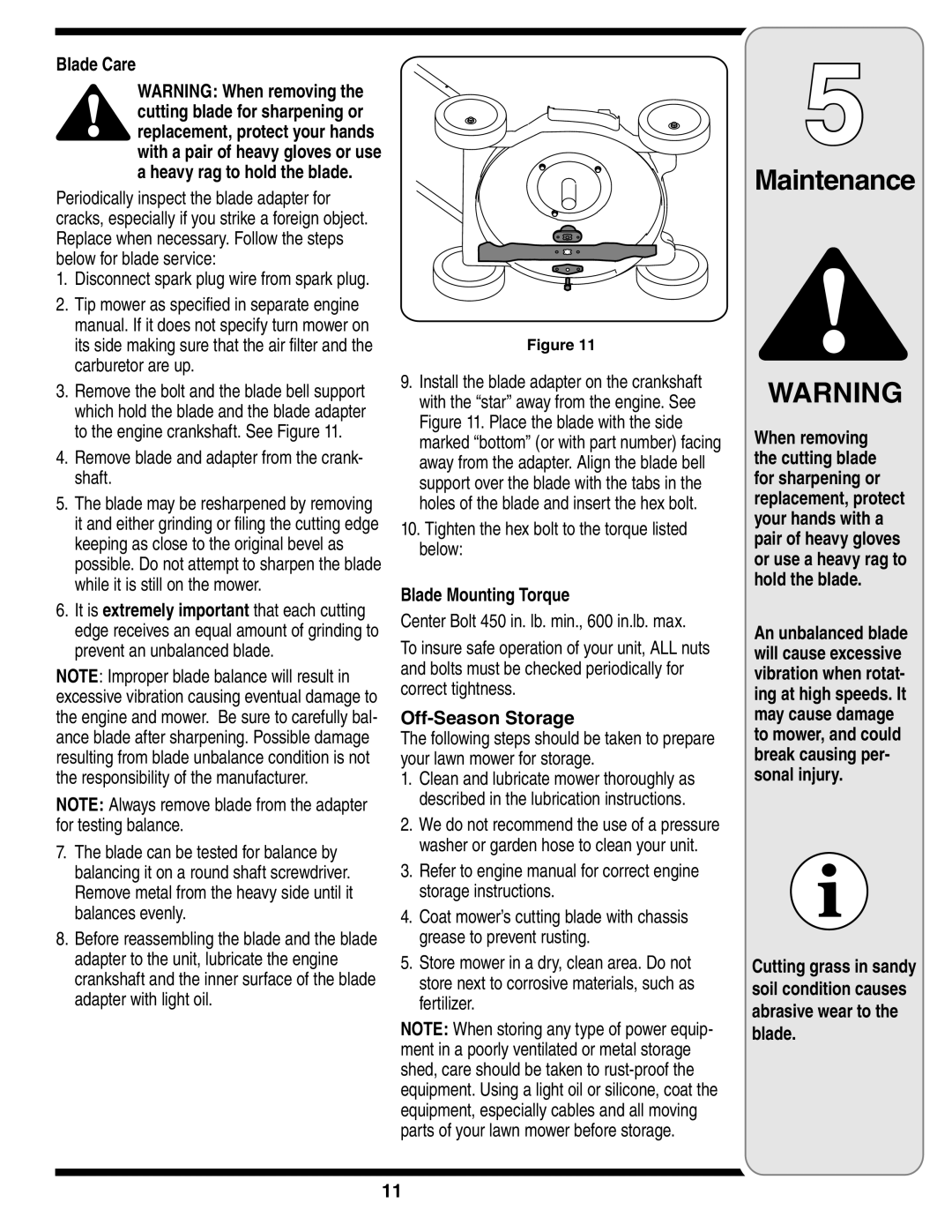100 specifications
The Troy-Bilt 100 is a versatile and robust tiller designed to meet the needs of both amateur gardeners and seasoned horticulturists. Engineered for efficiency and ease of use, it stands out in the market due to its array of features and innovative technologies.One of the key characteristics of the Troy-Bilt 100 is its powerful engine. It is typically equipped with a reliable 4-cycle engine that provides ample torque and power for a variety of soil types. This engine ensures that the tiller can break through tough, compacted soils with minimal effort, allowing for efficient cultivation and preparation of garden beds.
Another notable feature of the Troy-Bilt 100 is its dual rotating tines. These tines are designed to penetrate deeply into the ground, breaking up soil clumps and mixing in organic material effectively. The tines can often be adjusted for different tilling widths, providing flexibility depending on the size of the area being worked. This adaptability makes it suitable for both large gardens and smaller landscaping projects.
The tiller's lightweight and maneuverable design enhance its usability. The Troy-Bilt 100 is typically built with user-friendly controls that make starting and operating the machine straightforward. An ergonomic handle ensures comfortable grip and reduced fatigue during extended use, which is particularly beneficial for those with larger gardens or complex landscaping tasks.
Additionally, the Troy-Bilt 100 features an easy-to-use transmission system. Many models boast a forward and reverse feature, which allows users to easily navigate around obstacles or reposition within the gardening space. This function can significantly improve productivity and reduce the time spent tilling.
Maintenance is made convenient with the Troy-Bilt 100, as it is designed for easy access to components. Regular upkeep is vital for any outdoor equipment, and the construction of this tiller allows for straightforward oil changes and tune-ups, ensuring longevity and optimal performance.
Overall, the Troy-Bilt 100 combines power, versatility, and user-friendly design, making it an excellent choice for gardening enthusiasts who seek to cultivate their gardens efficiently and effectively. Whether for tilling soil before planting, mixing compost, or maintaining garden beds, the Troy-Bilt 100 delivers reliable performance that gardeners can trust.

